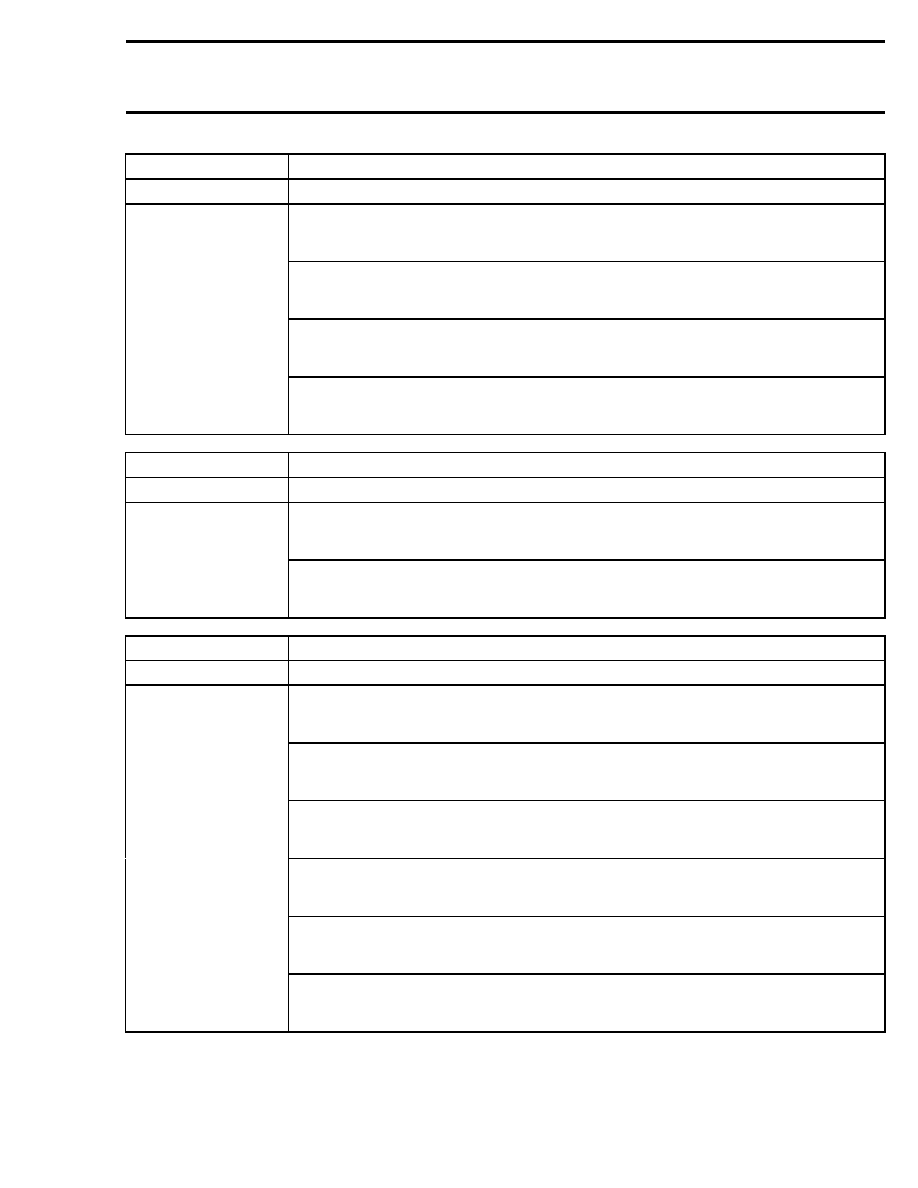Snowmobile Ski Doo REV SERIES (2006 year). Instruction - part 11

Section 02 TROUBLESHOOTING
Subsection 03 (DRIVE AND BRAKE SYSTEMS)
SYMPTOM
SLIDER SHOES WEAR OUT PREMATURELY/OR TRACK CLEATS BECOME BLUE.
CONDITION
NORMAL USE
1. Check track tension.
a. Pressure is too great on slider shoes.
Adjust according to specifications (refer to TECHNICAL DATA). Replace defective parts.
2. Check idler wheel condition.
a. Stuck bearing, flat spot on wheel or damaged wheel.
Replace defective parts.
3. Check snow conditions or lack of snow.
a. Lack of lubrication of slider shoes.
Ask driver to ride in appropriate snow conditions (see Operator’s Guide).
TEST/INSPECTION
4. Check slider shoes and/or suspension retaining screws.
a. Twisted slider shoes or loose retaining screws.
Replace defective parts and/or tighten loose screws.
SYMPTOM
DERAILING TRACK.
CONDITION
NORMAL USE
1. Check track tension.
a. Track is too loose.
Adjust.
TEST/INSPECTION
2. Check if track and slider shoes are properly aligned.
a. Improper alignment.
Adjust.
SYMPTOM
NOISE OR VIBRATION COMING FROM THE TRACK.
CONDITION
NORMAL USE
1. Check slide suspension retaining bolts.
a. Missing bolt(s) (some components interfere with track rotation).
Replace missing bolt(s).
2. Check condition of idler wheel(s).
a. Idler wheel rubber is damaged.
Replace.
3. Check guide cleats.
a. Top portion of guide cleat(s) is bent.
Replace.
4. Check sprockets.
a. One or several teeth of drive shaft sprockets are broken.
Replace sprocket(s).
5. Check track tension.
a. Track is too loose.
Adjust to recommended tension.
TEST/INSPECTION
6. Check track rods and/or internal traction teeth.
a. One or several track rods and/or teeth are broken.
Replace track.
mmr2005-065
31